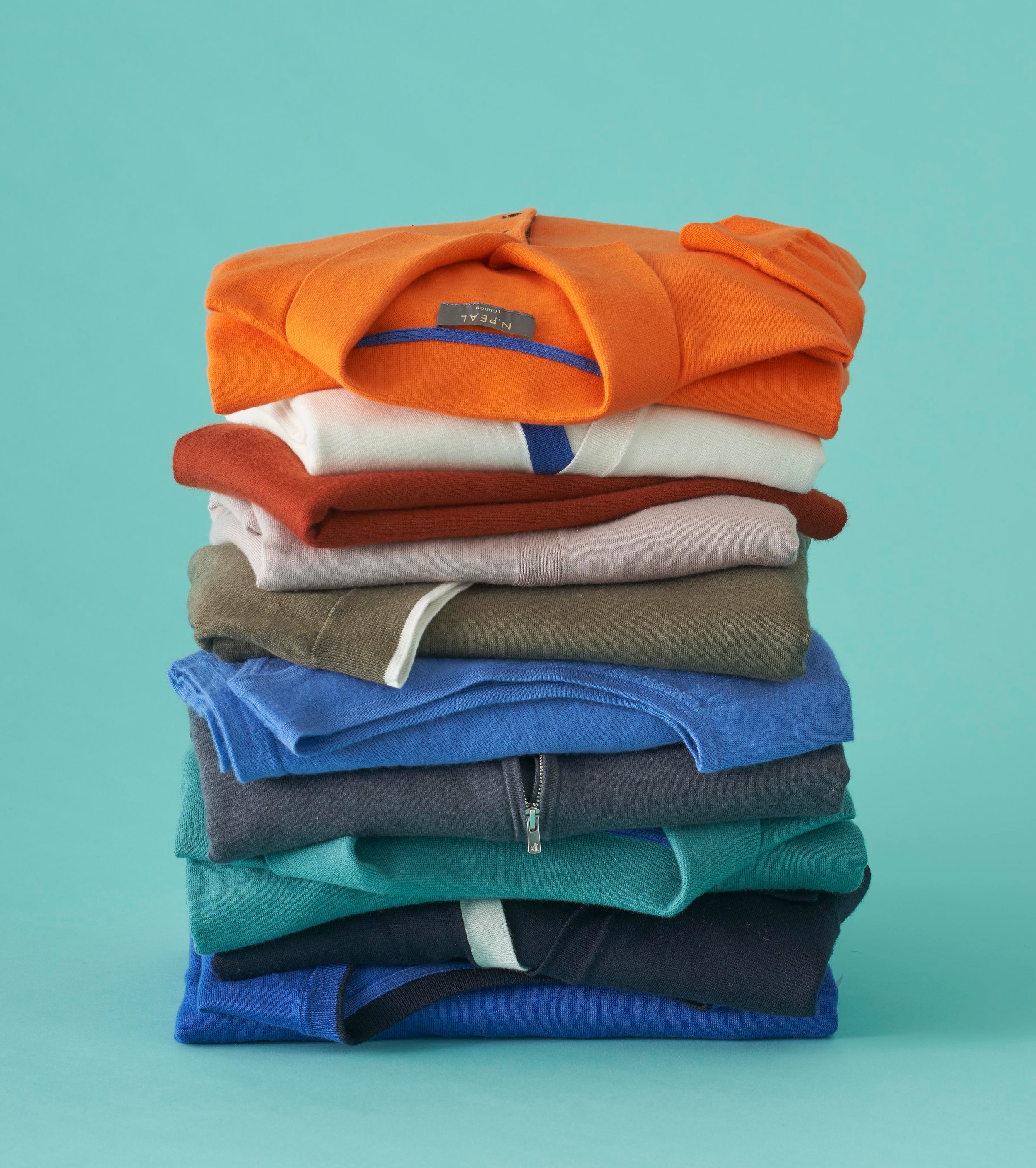Identifying Quality Cashmere
Cashmere is known as a super-soft and cozy luxury fabric. However, not all cashmere is created to the same level of standards. To ensure you're investing in the finest quality, as well as your own style, it is important to understand the common properties of cashmere.
Here we will focus on its benefits, longevity, and how to distinguish the highest cashmere quality.
What Are Common Cashmere Properties?
Cashmere sits apart from standard types of wool for quite a few different reasons. It is incredibly soft and often described as "buttery" or "silky" to the touch. As well as this, it is remarkably lightweight and extremely comfortable to wear, especially in cold weather. However, it also regulates temperature well, so it keeps you warmer or cooler.

Cashmere wool is much finer than other types of wool and has a natural drape that lends itself beautifully to clothing. That’s why it is so regularly used to create luxury garments that last.
Benefits of Cashmere
There are many benefits to investing in cashmere pieces for your wardrobe. For starters, it is a sought-after material that lasts, which is why people choose cashmere time and time again. It exudes luxury, sophistication, and classic style. High quality cashmere pieces can last for years and never go out of style.
It is also a warm, comfortable, and soft material that doesn’t have the bulk of traditional wool. This makes it perfect for creating finer, better-quality garments with a more delicate look and feel. It usually looks smarter than other knitwear styles too.
How Long Does Cashmere Last?
The lifespan of cashmere largely depends on its quality and how well it is cared for. High-quality cashmere can last for decades if properly maintained, so if you choose a classic, timeless style you can wear it year after year. Regularly airing out and storing cashmere items in a cool, dry place can help prolong their life.
What is the Highest Cashmere Quality?
Cashmere quality is determined by various factors, including the fineness of the fibers, the length of the fibers and the region of origin. The highest quality cashmere comes from the underbelly of cashmere goats, where the fibers are the softest and finest. Cashmere from regions like Mongolia and Inner Mongolia is highly regarded for its quality.

Cashmere is graded on these factors and priced accordingly. Higher-grade cashmere is more expensive but also offers superior softness and warmth – items made from higher quality cashmere truly feel like an investment piece.
What Are The Cashmere Quality Grades?
Cashmere is graded based on its fineness, with Grade A being the highest quality. It is important to understand these factors if you’re looking to invest in cashmere. Here is a general breakdown of cashmere grades and what they mean:
- Grade A - the finest and softest cashmere with the longest fibers, typically less than 19 microns in diameter.
- Grade B - slightly coarser than Grade A, with fibers measuring between 19 and 20 microns.
- Grade C - coarser cashmere with fibers between 20 and 21 microns.
- Grade D - the coarsest cashmere, with fibers exceeding 21 microns.
Is Cashmere Worth It?
If it is in your budget, cashmere is worth it, especially if you can buy the best quality. While it is more expensive than some other materials, the luxurious feel, exceptional warmth, and longevity of high-quality cashmere make it a worthwhile investment for many. If you work out cost-per-wear on a classic piece that lasts for decades, you probably spend less than on multiple cheaper pieces over the years.

Understanding the properties and quality of cashmere is important when making a purchasing decision. By choosing high-grade cashmere and taking proper care of your items, you can enjoy the luxurious comfort and timeless elegance that cashmere offers for years to come.



